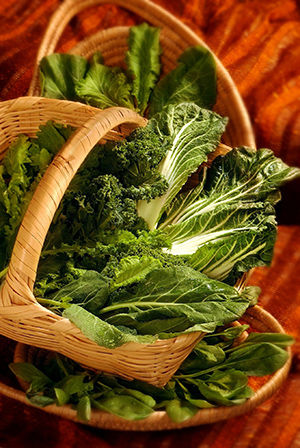Turning green: A guide to leafy vegetables

Photo courtesy of MTC Campus.
April 21, 2015
“No dessert until you eat all of your vegetables!” Mom and Dad said as I miserably looked down at my plate with a big heap of spinach staring back at me.
Sure, I could have easily refused to eat the green glob sitting on my plate, but at the time, ice cream was the most important thing in my life and not getting any was simply not an option.
To get it down, I employed the “plug your nose and chug water after swallowing” method. It never failed.
As I’ve grown up, however, I’ve learned that eating fruits and vegetables really can be the difference between feeling skinny or like a blob.
While it is recommended to eat five servings of vegetables per day, or 2.5 cups of cooked vegetables, there really is no such thing as “too many” vegetables.
Taking a look at vegetables like kale, spinach, collard greens and Romaine lettuce and all of the nutritional benefits they contain, we should all thank our parents for making sure we always got our fill at the dinner table.
Here are some of the benefits of a few leafy vegetables from the George Mateljan Foundation:
Kale, a nutritional powerhouse, contains large amounts of minerals, folate — essential for brain development — and vitamins A, C and K. It even has more calcium than milk. The 2.5 grams of fiber helps manage blood sugar and makes you feel full, which is why it is recommended to help with weight loss. The bitter-tasting plant has recently been rising in popularity in the kitchen with kale chips, smoothies and pasta.
Made famous by Popeye, spinach can restore and increase energy and is great for red blood cells and bone health. It is packed with nutrients, contains very little calories and even has almost double the amount of potassium as a banana.
Romaine lettuce is good for your heart with its vitamin C and beta carotene working to prevent the oxidation of cholesterol, which can trigger a heart attack or stroke. It contains 8 percent of our daily recommended intake of fiber, and one cup only has eight calories. Top it with a little fat-free dressing for an easy salad fix.
Several studies suggest that collard greens may have an effect on cancer prevention, specifically colon cancer. One cup of greens contains about 30 calories, but each type of greens contains different nutritional value. The cruciferous vegetable also has the ability to lower cholesterol.
So maybe our parents weren’t trying to torture us as kids and really did have our best interests at heart. And as far as these plant-based vegetables go, maybe it’s time to turn over a new leaf.
Contact Katie Leyton at [email protected].
























